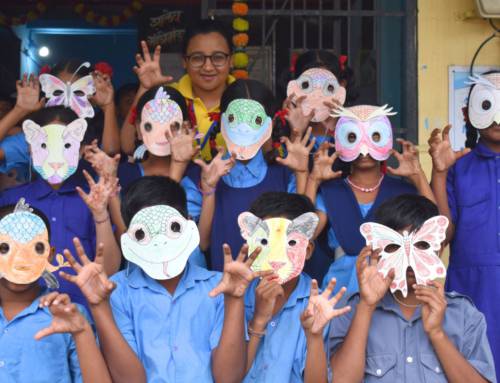Research Article: Raghavan B, Wilson A, Namboodiri S, Selvaraj M, Karanth K. Knowledge, attitudes and practices related to health and well-being in a forest fringe community in southern India. BMC Public Health. 2025 May 6;25(1):1666. doi: 10.1186/s12889-025-22653-z. PMID: 40329275; PMCID: PMC12054068.
Blog Author: Kavya Pandey
Key Highlights:
- Living near forests provides health benefits through access to nature, but also poses risks of conflicts resulting from close interactions with wildlife.
- The COVID-19 pandemic highlighted the susceptibility of communities near forests to disease outbreaks, especially zoonotic diseases that spread from animals to humans.
- A recent survey of 35 villages around Mudumalai Tiger Reserve collected data on health issues, socioeconomics, and behaviors through interviews.
- The results showed that people with more education knew more about how diseases spread and were more likely to do things that keep them healthy.
- Despite common illnesses like fever and heart disease, only 9% recognized lifestyle as a risk factor, exposing significant knowledge gaps.
- Improving healthcare, education, and sanitation, while engaging communities in health awareness, can greatly prevent disease outbreaks, especially those from wildlife.
Imagine living in a lush forest, surrounded by nature’s beauty, yet facing constant health risks that are often invisible to the outside world. Communities living near forests in southern India lead lives deeply intertwined with their environment, but this proximity to nature also exposes them to unique health dangers. Limited access to healthcare, poor sanitation, and traditional beliefs shape how they understand and manage health. The COVID-19 pandemic further highlighted how vulnerable these communities are to disease outbreaks, especially those transmitted from animals to people, called zoonotic diseases.
A recent study by Raghavan et al. aimed to uncover what these communities know about health, what challenges they face, and how socioeconomic factors influence their health practices. By listening to their stories and experiences, researchers hope to find better ways to support these communities in staying healthy and safe. This research offers important insights into how we can bridge gaps in healthcare access and improve living conditions for those living at the very edge of our natural ecosystems.
Researchers conducted semi-structured interviews with households across 35 villages near the Mudumalai Tiger Reserve. Each interview lasted 2–3 hours and focused on themes such as self-reported health issues, healthcare-seeking behaviors, risk factors, and socioeconomic details. In total, 236 respondents participated, with 74% providing complete responses. The health issues reported included both acute and chronic conditions. Acute illnesses, primarily fever (24%), cough, and undiagnosed fevers, were common, while chronic illnesses included high blood pressure (37%), anemia (17.7%), diabetes (17%), and joint problems (15.5%). Depression and mental health issues were rarely reported (<2%).
In the community, those with only primary education or less were more likely to experience and report sudden illnesses, yet they tended to be less aware of how lifestyle factors contribute to health problems. On the other hand, individuals with higher education levels showed a better understanding of what causes diseases. Many households also faced basic challenges, such as limited access to clean drinking water, proper sanitation, and nutritious food, essentials for good health. Despite these issues, confidence in government healthcare services was relatively high, with about three-quarters of people expressing satisfaction. However, hurdles like high treatment costs and inadequate infrastructure continue to pose significant barriers to accessing quality healthcare.
Many community members faced both sudden (acute) and ongoing (chronic) health problems, with fever being a common symptom. Over 75% of people preferred government healthcare facilities for basic treatment, but turned to private clinics for surgeries. Interestingly, some people spent a significant portion of their income on healthcare, showing it can be a financial burden.
The study looked at how a person’s level of education affects their understanding of what causes diseases and how they take care of their health. They used statistical methods to see if there’s a real link between these things. The education level (like being illiterate, having primary or secondary school education, or higher education) was the cause. The effects were whether people understood what causes diseases and what healthy behaviors they followed, like getting vaccinations or practicing good hygiene. The results showed that people with more education knew more about how diseases spread and were more likely to do things that keep them healthy. This means that learning and knowing more about health can help communities make better choices and stay healthier.
The researchers argue that health programs for these communities need to consider their socio-economic realities. Improving healthcare access, providing education about diseases, and upgrading sanitation can make a big difference. Additionally, involving communities in health awareness can help prevent disease outbreaks, especially zoonotic diseases that originate from wildlife.
Living close to forests offers both benefits to health due to nature, while simultaneously, risks of conflicts due to proximity to wildlife. People here often don’t have easy access to good healthcare, and their beliefs and living conditions influence their health. The pandemic showed how vulnerable these communities are, making it vital to understand their needs and improve their health and hygiene practices. By doing so, we can protect both the communities and the forests that they depend on.
To access the original article, click here.
Keywords: Public health, Community health, Healthcare access, Indigenous communities, KAP, India



